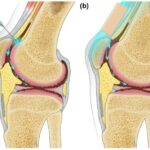
Can Neurological Chiropractic Help with Vertigo?
Vertigo throws off more than your balance. It can affect your routine, your mood, and your sense of control. While it often begins in the inner ear, the issue isn’t always so cut and dry. In many cases, the brain and spine are caught in the middle of the confusion. Neurological chiropractic adjustment may offer an alternative approach in such cases.
This form of care looks at how the brain and spinal cord manage your sense of movement and spatial awareness. When signals misfire between these systems, you might feel like you’re spinning even when standing still. A neurological chiropractic approach addresses both symptoms and the underlying communication between the spine and nervous system.
The Brain’s Role in Balance
Vertigo usually begins when your body’s sense of equilibrium is thrown off. Sometimes it’s due to ear infections or conditions like BPPV (benign paroxysmal positional vertigo), where crystals in the inner ear shift and affect balance. But for some, the source is higher up, in the brainstem, spinal cord, or other parts of the nervous system.
Neurological disorders like vestibular migraines or multiple sclerosis can trigger vertigo. These conditions interrupt how your brain interprets head position and movement. As a result, signals get crossed, and your sense of stability takes a hit.
A neurological chiropractic adjustment aims to address these kinds of disruptions. Instead of only correcting spinal alignment, it also focuses on improving how your body processes movement through nerves, joints, and brain responses.
What a Neurological Chiropractic Adjustment Does
Traditional chiropractic care focuses on spinal manipulation to reduce pain and stiffness. A neurological chiropractic adjustment goes further. It includes adjusting joints as well as addressing how the brain interprets and responds to body movement.
During a session, the chiropractor might evaluate how your eyes track objects, how you stand with your eyes closed, or how quickly your muscles respond to changes in position. These tests help spot gaps in your brain’s ability to manage motion, and for some patients, the session itself also offers a chance to destress, releasing physical tension that might be contributing to their symptoms.
Treatment may include low-force adjustments to the neck or spine, balance training, or even eye movement exercises. The goal is to retrain the nervous system so that it responds more accurately to real-world movement. Think of it as recalibrating your internal compass.
Why It Might Help Vertigo
Some vertigo symptoms are tied to the cervical spine. Nerve signals from the upper neck help the brain interpret head position. If those nerves are irritated, misaligned, or under stress, they might send faulty messages that mimic vertigo.
In cases like these, a neurological chiropractic adjustment can help by reducing tension, restoring mobility, and supporting more accurate nerve feedback. Over time, this may ease dizziness and improve spatial orientation.
Early research supports this direction. Some case studies have shown improvement in vertigo symptoms following spinal care, especially when the issue is linked to postural problems or minor neurological disorders. While large-scale studies are still limited, anecdotal evidence is growing.
Not a Catch-All Treatment
Spinal care will not fix everything. If your vertigo is caused by an ear infection or a degenerative brain disease, spinal adjustments alone will not do the trick. That is why a thorough assessment is essential. A qualified practitioner should rule out serious medical issues and may refer you to a neurologist or ENT specialist when needed.
Responsible care focuses on what can be treated, not selling false hope. A proper plan may involve a mix of therapies, especially if your symptoms are tied to both structural and neurological issues.
The Patient Experience
A neurological chiropractic session is usually more involved than a standard adjustment. It starts with a detailed assessment, covering your medical history, reflexes, coordination, and balance. From there, the chiropractor might suggest a series of sessions that include both hands-on adjustments and movement-based exercises.
The process is not painful, and it does not rely on forceful techniques. Instead, it is more about precision and timing, helping your brain reconnect the dots so your body can respond correctly to movement.
Improvement is not instant. Some feel better after one or two visits; others need more time depending on the severity of their symptoms and underlying conditions. Progress is tracked with follow-up tests that show how your balance, posture, or visual focus has changed.
Working with Your Medical Team
Neurological chiropractic care is not meant to replace your doctor’s advice. If you are already seeing a specialist for your vertigo, let them know you are considering chiropractic care. Coordinated treatment is always safer and more effective than going it alone.
Combining chiropractic adjustments with physiotherapy or other forms of neuro-rehabilitation can improve your chances of success. It is not about picking one path; it is about choosing a plan that matches your needs.
When to Explore This Option
If your vertigo has lingered despite medication, or if you suspect your posture and neck play a role in your symptoms, it might be time to explore neurological chiropractic. The goal is not to promise a cure but to offer another layer of support that targets your nervous system directly.
Contact True Chiropractic to book a consultation and find out if your spine and brain are sending mixed signals, and what can be done to set them straight.


















